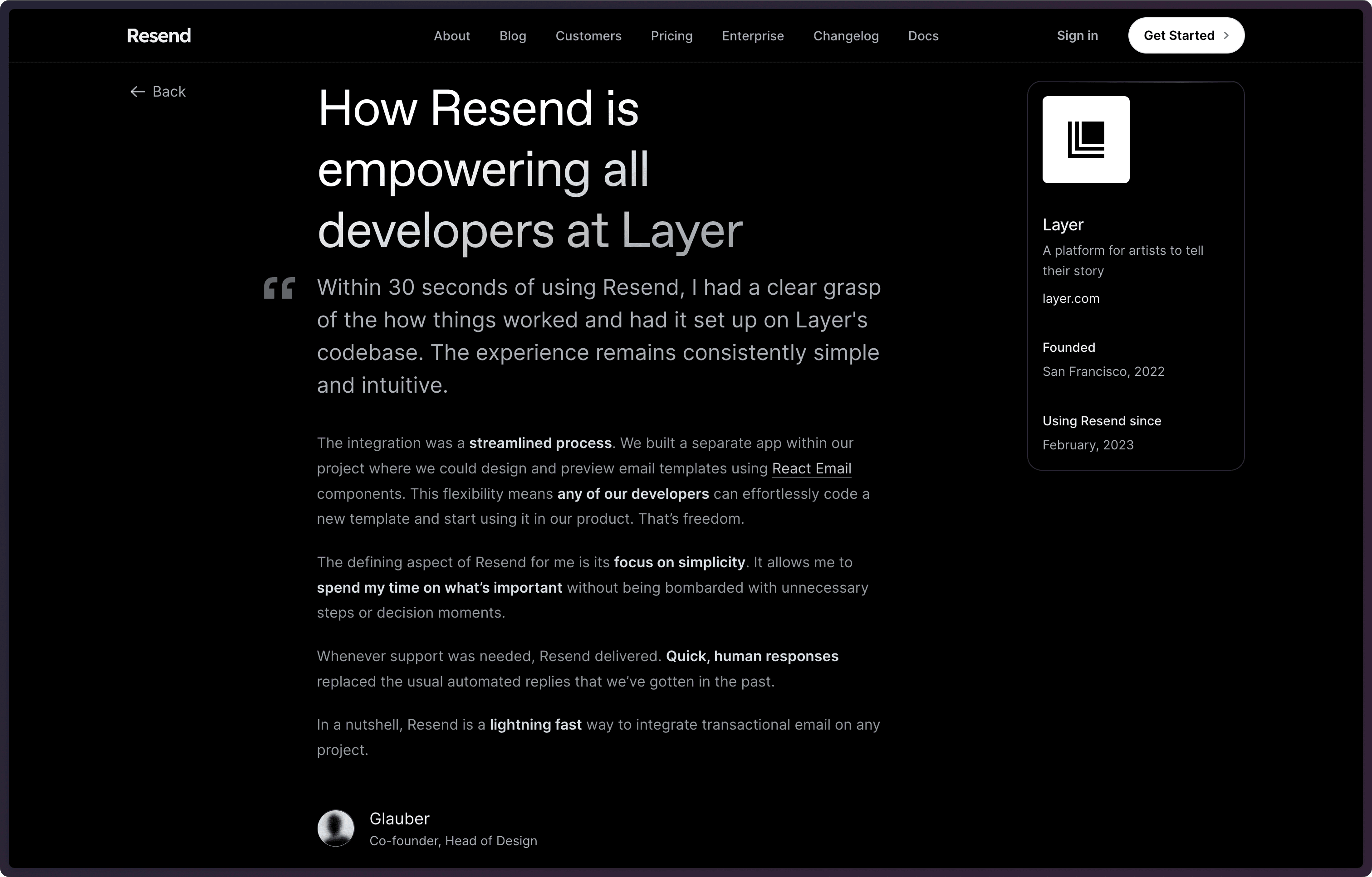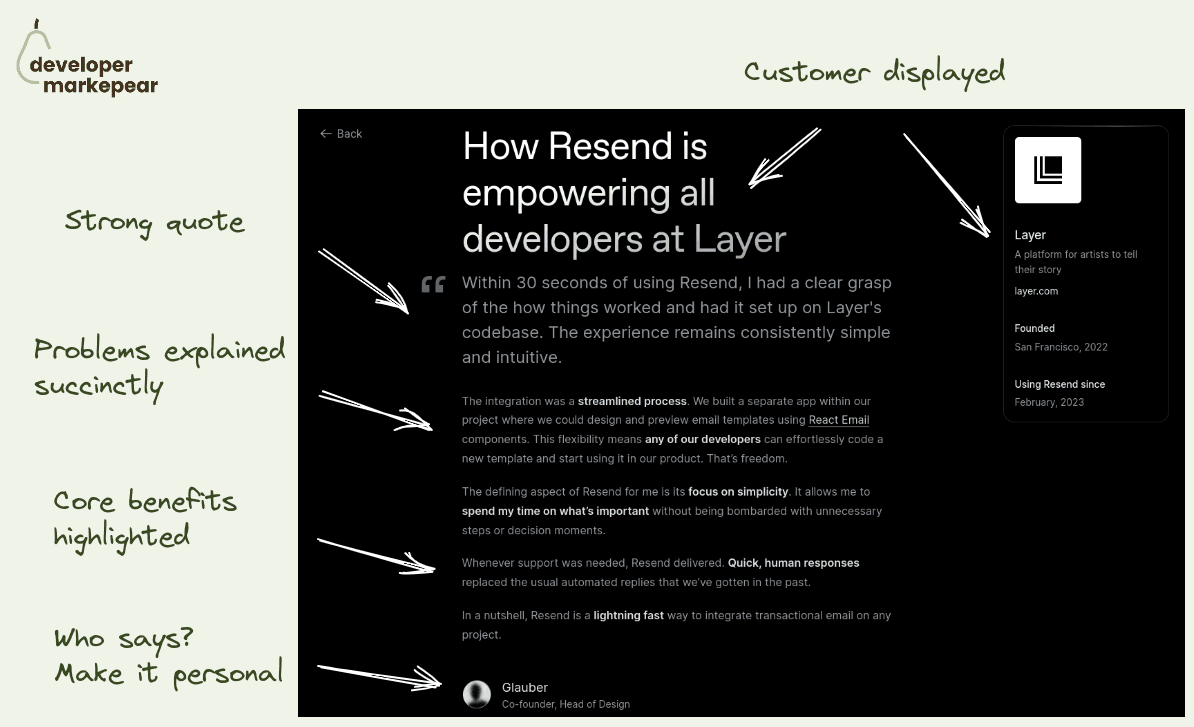How we write customer stories
Why
Stories let us share information in a way that creates human connection. Every customer has a story to share, and it's up to us to find the right angle to tell it.
There are two main reasons why we spend time writing customer stories:
1. Attract potential customers - There is no better selling point to prospective customers than having direct proof and real-world examples of how our product is helping other companies. This is particularly impactful if a customer story features a market leader, a trending product, a competitor, and or if it describes a challenge that others might be experiencing. The thought process here is: "I admire company X, if company X is using Resend, we should use it too".
2. Retain existing customers - Customer stories are not only a way to attract new logos by association, but it also helps to turn customers into advocates making them more loyal in the long run. By describing their experience and documenting everything, it makes them reflect and articulate the value we provide.
Impact on the team
Apart from the external factors, there are also some internal benefits to writing these customers stories:
1. Better understand our key customers - By doing this exercise, it forces us to run a complete research and have full clarity of how key customers are using our products. We can generate insights from it and use that new understanding to make better product decisions.
2. Motivate the team - Having a nice logo using our product is a reason to be proud. Not every person in the team has the opportunity to interact with customers directly, so this a way for us to keep the momentum and have the team closer to who we are serving.
Format we use
We believe that most developers don't have time to read a 5-page customer story. That's why we keep things simple and aim to fit everything on a single viewport.
- Title: it needs to be descriptive and shouldn't be longer than 3 lines.
- Quote: it needs to be powerful and get people's attention.
- Content: it needs to contain highlights of specific keywords.

The fine folks from Developer Markepear dissected our format, so if you want to learn more we suggest reading this page.

Questions we ask
When approaching a customer to write a story, here are the questions we ask:
- Tell us about your sending. Why are emails important to your business?
- Walk us through the experience taking Resend into production.
- What would you miss the most if you had to stop using Resend?
- How was the help when you ran into problems?
- Describe Resend to a friend in one sentence.
After they send the answers, we're responsible for crafting an engaging story.
Once the company approves the draft, we are ready to publish the customer story to all of our socials.
Publishing cadence
We aim to publish 1 customer story per week.
Not every customer should have a case study, but we should still follow an agenda and have a consistent approach to it.

